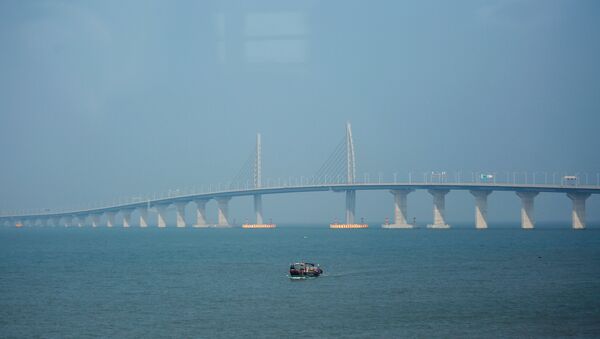The chief engineer and the inspiration behind the project, 43-year-old Zhang Jinwen told Sputnik about how they started designing the bridge 18 years ago, the difficulties that the engineers had encountered in building one of the world’s most complicated constructions and how the still unfinished construction had managed to resist the most devastating typhoon of the past 53 years, Hato.
Bridge as a Museum Construction
"The form of the bridge is like a sail: the right sail catches the right wind. There is such an idiom in the Chinese language. You know, philosophical comprehension is rather important in our profession!" said Zhang Jinwen. He has already been managing the project for 18 years and received several state awards during this time. Jinwen is one of China’s unique engineers, who at the age of 38 (considered to be very early in China – editor’s note) was awarded the All-China medal for labor "May 1st" for contributions to the development of engineering.
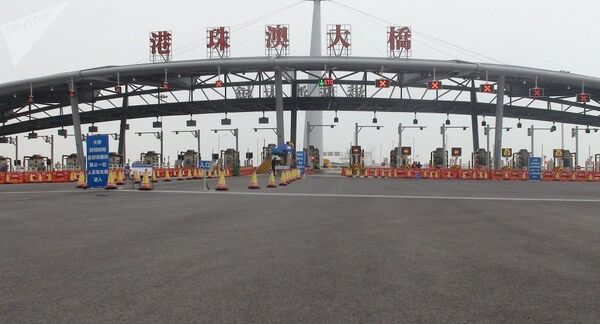
Zhang Jinwen really turned out to be a very enthusiastic person. When meeting with the Sputnik correspondent he enthusiastically agreed to talk about his work and offered to drive to the border post in Hong Kong which is currently designing the interior layout. The bridge starts on an artificial island close to Hong Kong International Airport and runs to the west towards the next artificial island near the eastern coast of Macau. Its total length is 55 kilometers. The bridge’s main section is split into two three-lane highways.
The designing of the bridge began as early as in 1999 with the preliminary plan of the main and the most complicated part of it, the underwater tunnel. The building of the tunnel alone took seven years. In 2004 the plan was partially approved. According to Zhang Jinwen the bridge hadn’t initially been conceived just as a simple connection between the three cities, it was intended to be a monumental structure to some extent similar to a museum in terms of its architectural significance. However, this comparison is not accidental. A special pure concrete which is usually reserved for the construction of museums and theaters has been used to build the artificial islands at the exits from the underwater tunnels. These islands stand on 120 giant steel cylinders 22.5 meters in diameter and 55 meters in height which is similar to an 18-story building.
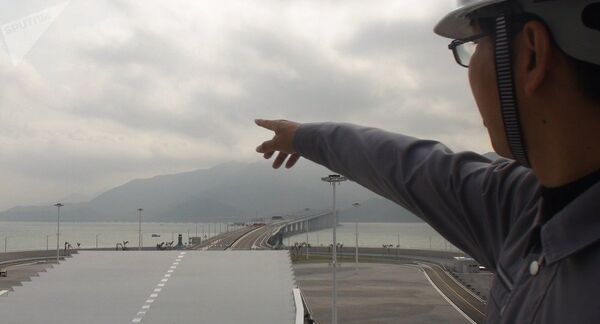
Zhang said that they had been close consulting with various construction firms from 11 countries. Over 90 foreign experts came to share the experience.
"We’ve signed 11 consulting and maintenance agreements with foreign companies. Experts from 90 countries have visited the construction site."
To protect the river’s flora and fauna and in order to avoid blocking the canals and make the bridge ecologically safe, the architects took into account the main hydrological characteristics and navigation routes.
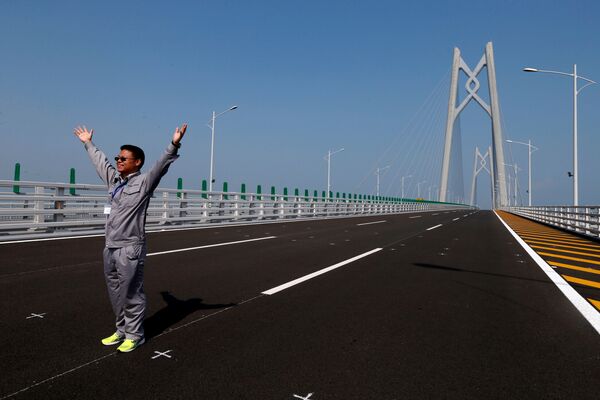
"The cable-stayed bridge is built in accordance with the location of navigation routes. In most cases, the water flow direction is perpendicular to the bridge axle and the amount of transiting water is at the maximum level. Water flow must be taken into account in the design of the bridge. That explains many of the curvatures in the form of the bridge, all of its elevations and gradient. A cruise ship of 300 thousand tons can safely pass over the underwater tunnel."
Difficulties and First Challenge
Up to 20,000 engineers had worked on the bridge during the busiest period of construction. We had to solve different problems in the process of construction, apply in practice new technologies which had never been used earlier.
"Everyone had been working at their maximum capacity. Once I met my colleague and noticed that his hair had turned white! You see what kind of pressure we had to withstand," the engineer said.
"This bridge to a large extent represents the limits of engineering knowledge. We had faced different problems. The tubes had sunk three times before we could manage to lay them. It took us 153 days to build a pylon. I think all these difficulties are exactly what an engineer should be faced with. This is like in a war: the soldier’s task is to achieve victory. And the engineer’s task is to find the solution to the problem at a construction site," he noted.
Huge underground stone plates were the stumbling block in the construction; they required a special geological investigation.
"The landscape of the river varies greatly. There is the sedimentation of the soil in Hong Kong area, while alluvial sediments are found on the Zhuhai side. That’s why in some places the soil level is high and some it is low. But the biggest problem arose from the huge stone plates at the river’s bottom. This required a detailed geological investigation," Zhang Jinwen told Sputnik.
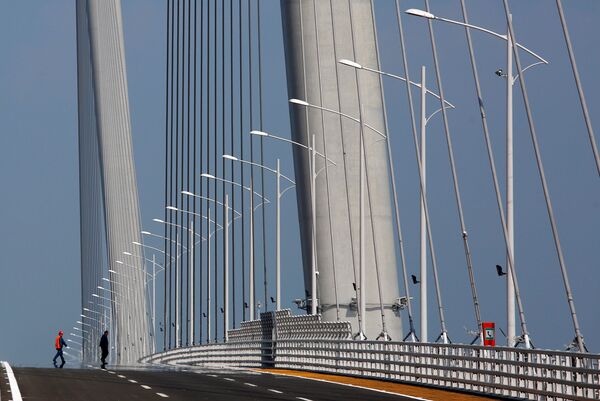
"In the morning I ran to the waterfront to check the aftermath of the cyclone. In general, I knew that nothing could happen as we had designed the bridge so that it could resist an 8.0 earthquake and 16.0 typhoon," he said.

